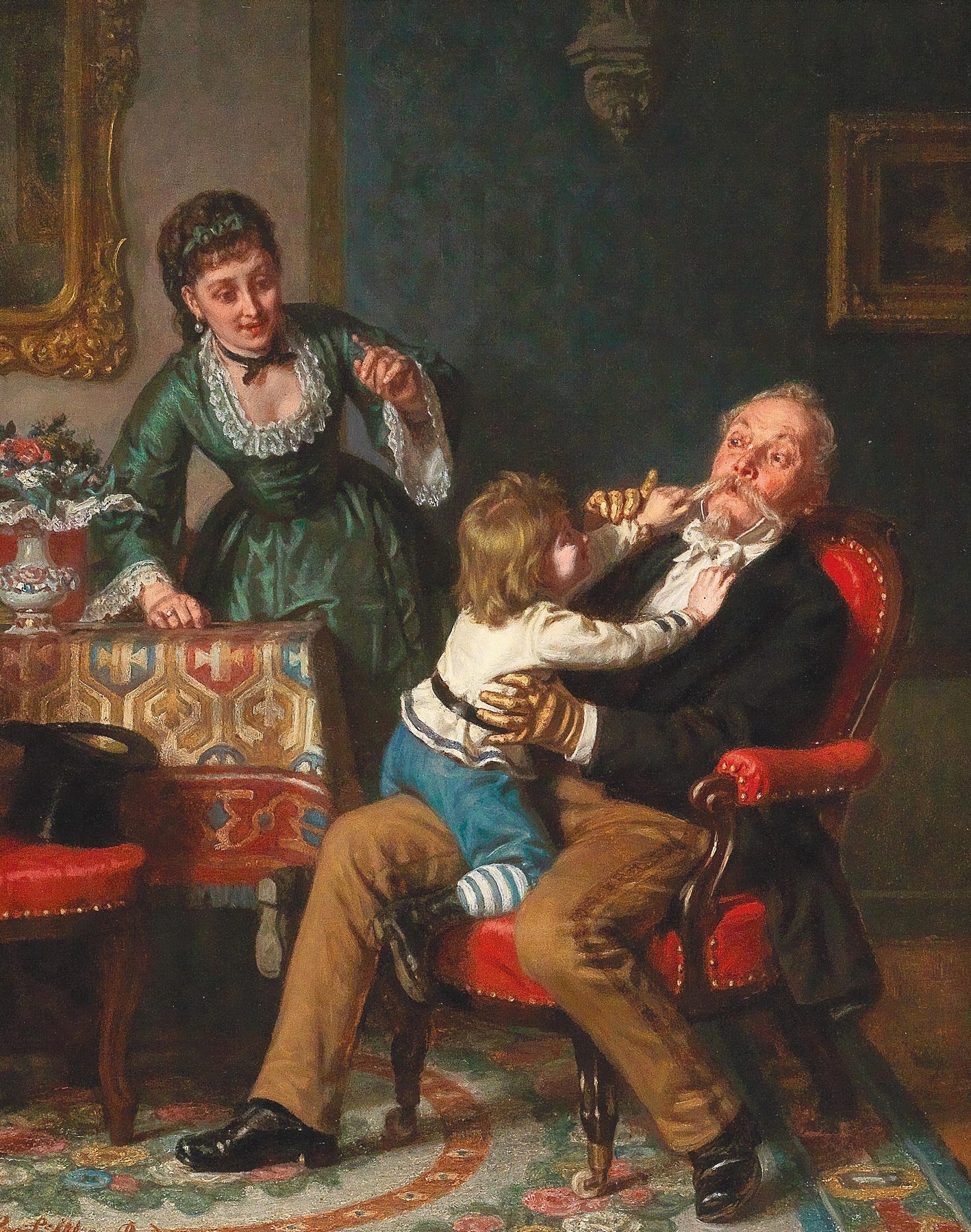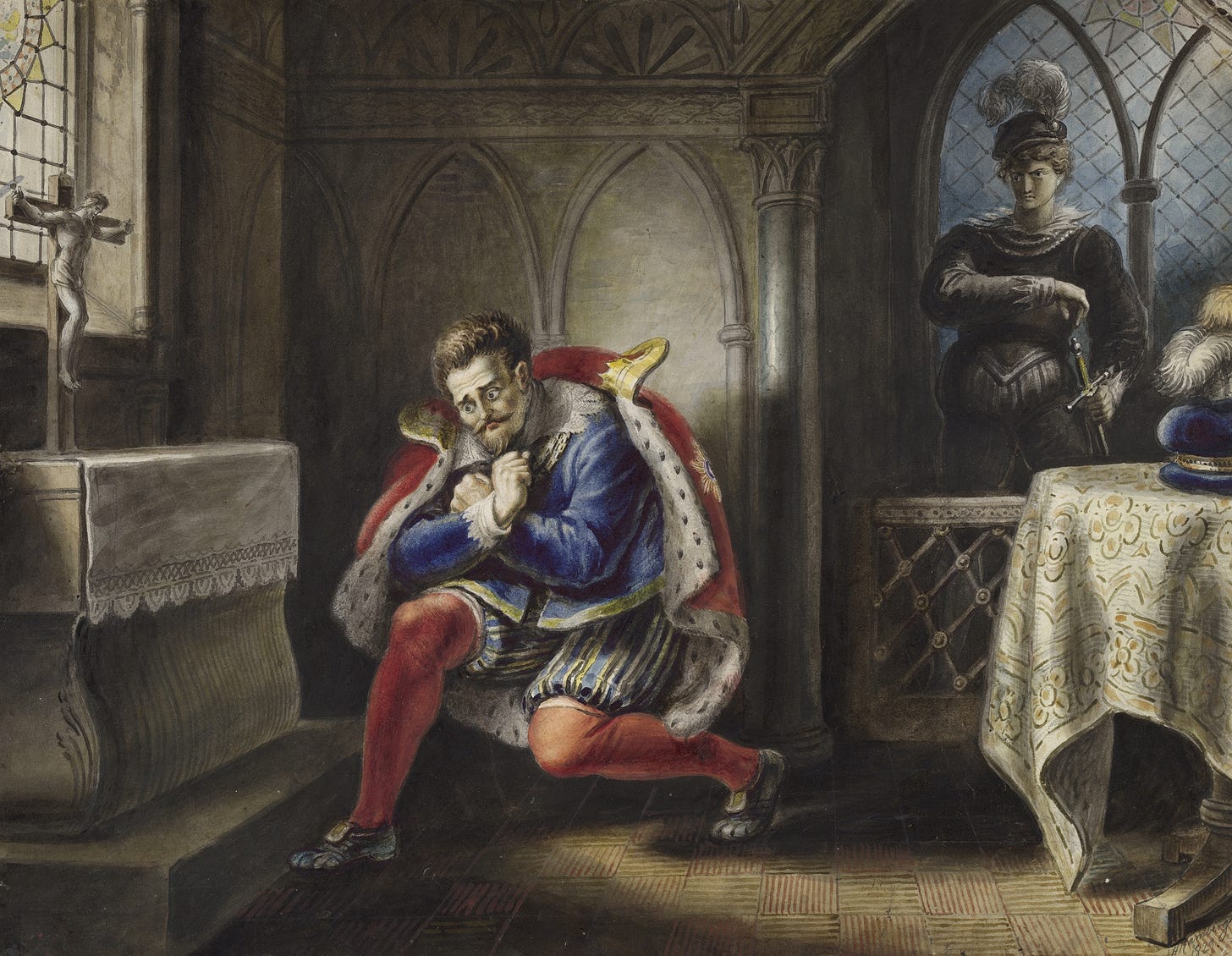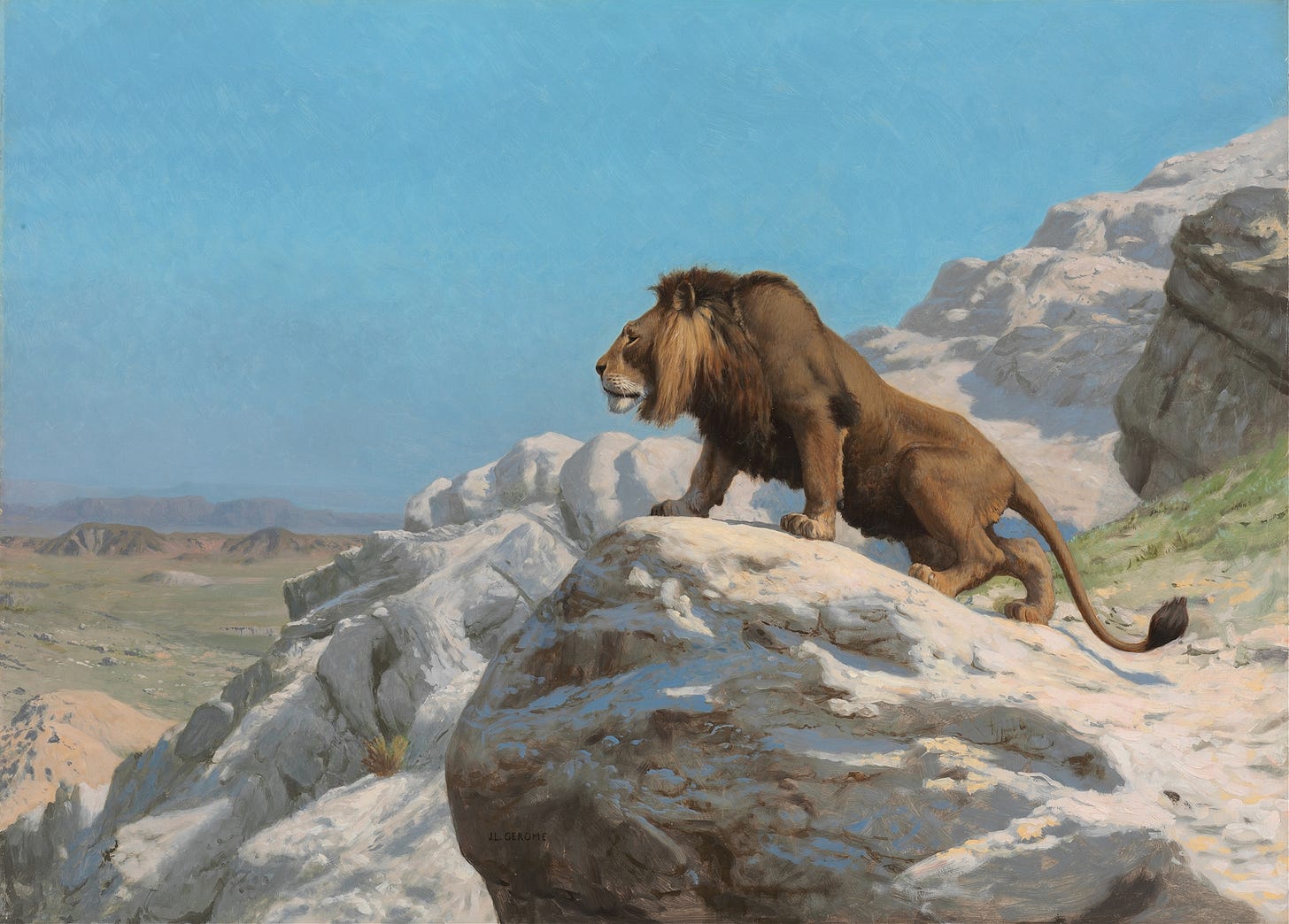Never trust your father's brother
Evil uncles from Beowulf to The Lion King
The mead hall blazes with torchlight as Beowulf kneels before his uncle Hygelac, King of the Geats. With reverence, he presents the magnificent treasures given to him by the King of the Danes — a gold-chased battle standard, a helmet, a coat of mail, and four splendid horses. Though these gifts were bestowed upon Beowulf for his victory over the monster Grendel, he offers them all to his mother's brother.
“These I gladly give you, my king,” the hero says, his voice carrying across the hushed hall.
But Hygelac's expression darkens. “You sailed without my leave, Beowulf,” he says, his voice tight with anger. The gathered warriors shift uneasily. “You risked your life for glory among foreigners.”
Beowulf holds his uncle's gaze without flinching. “I sought to bring honour to your name, as much as to mine.”
“And if you had died?” Hygelac demands, leaning forward on his throne. “What would I have done?”
A tense silence falls. In the societies of the Germanic Iron Age, the relationship between a man and his mother’s brother is an intimate and affectionate one — quite unlike the relationship between a man and his father’s brother. Between paternal uncle and nephew, there is usually more distance, even conflict.
Finally, Hygelac's stern face softens. He rises and clasps Beowulf's shoulders. “You have done what no other could,” he admits. “And you have returned, as you promised my sister you always would.” He takes the sword and raises it high. “The treasure you bring honours us both, sister-son.”
You're reading The Dead Language Society. I'm Colin Gorrie, linguist, ancient language teacher, and your guide through the history of the English language and its relatives.
Subscribe for a free issue every Wednesday, or upgrade to support my mission of bringing historical linguistics out of the ivory tower and receive two extra deep-dives per month.
Why your mother’s brother was nicer to you
In a time when blood itself was a kind of legal contract, the peoples of the Germanic Iron Age (AD 400–850) organized their world mostly around who was kin and who wasn't. But within this web of relationships, one bond stands out as particularly affectionate — the connection between a man and his sister’s son.
This special relationship was remarked on as early as the 1st century AD by the Roman author Tacitus in Germania, his survey of the customs of Germanic tribes. He wrote, “Sisters’ sons are held in as much esteem by their uncles as by their fathers; indeed, some regard the relation as even more sacred and binding.” (Germania 20, tr. Church and Broadribb)
Why did this particular relationship matter so much? The answer lies in the cold logic of patrilineal succession. In other words, inheritance worked through the father’s line. Your father's brother — your paternal uncle — stood inside your family’s power structure, potentially competing for the same lands, wealth, and status as your own father.
But your mother's brother belonged to a different family. He shared your blood without threatening your birthright. And, perhaps more importantly, you didn’t threaten his chances of inheriting wealth. In a world defined by lineage, he was the perfect ally: close enough to care, but distant enough not to compete.
Second father or little grandfather?
Even the language reveals the stark contrast between these two kinds of uncle. In Old English, there was a separate word for each type of uncle. Your mother’s brother was your eam, while your father’s brother was your fædera — note the similarity to fæder, the Old English word for ‘father.’
This difference even shows up in languages more distantly related to the Germanic group that Old English belongs to. Like in Old English, in many of these languages, the term for the father's brother derives from the word for ‘father’ itself — for example, Sanskrit pitṛvya or Latin patruus (alongside pitṛ and pater, respectively). The paternal uncle was essentially a “second father,” bearing the same authority and potential for conflict.
But the maternal uncle? His name comes from a different source entirely. We can see in the Latin term equivalent to the Old English eam, namely the avunculus ‘maternal uncle.’ This is the word from which we get the Modern English word avuncular, meaning friendly in an uncle-like fashion — the kind of person to make “pull my finger” jokes. Although the two words look different, the Old English word eam actually comes from the same root that gave Latin avus.
Tellingly, avunculus derives from the name for another family member: avus ‘grandfather.’ The word avunculus literally means ‘little grandfather.’ This linguistic connection with grandfathers suggests an entirely different relationship — one of indulgence and warmth rather than authority and discipline.
The other side of the relationship also had a name — if a man was your eam, you were his nefa. And — wouldn’t you know it? — the very same word was used for a man’s grandson. In case you’re curious, the Modern English nephew doesn’t actually come from nefa. It descends, through French, from nepos, the Latin equivalent to nefa. The Latin nepos meant both grandson and nephew, although it could apply to brothers’ sons as well.
All told, the linguistic evidence shows a clear distinction between the father’s brother, thought of as a second father — not necessarily in a good way — and the mother’s brother, thought of as a friendly, grandfather-like figure.
The fædera from Beowulf to The Lion King
Nowhere is this distinction more evident than in the Anglo-Saxon heroic poem Beowulf, which provides multiple examples of positive, maternal uncle-nephew relationships and negative, paternal uncle-nephew relationships.
The hero Beowulf's primary loyalty isn't to his father or his father's kin, but to Hygelac — his mother's brother. Their relationship exemplifies what anthropologists call the avunculate (and you know where that word comes from!) — the special bond between maternal uncle and sister's son.
When Beowulf sets out to defeat Grendel, he does so to gain glory for himself, yes, but also explicitly to honour Hygelac. When he receives treasures from the grateful Hrothgar, he presents them to his uncle upon his return.
Now let’s contrast this rosy picture with how paternal uncle relationships are depicted in the poem. While Beowulf and Hygelac represent the ideal maternal uncle-nephew relationship, another story represents its dark opposite: the usurpation of the Swedish throne from its rightful heirs Eanmund and Eadgils by their paternal uncle Onela.
A similar story can likely be told about the fate of the Danish throne after the death of Hrothgar, the king whose gifts Beowulf presented to Hyglac. Combining allusions in Beowulf with Scandinavian sources, most scholars conclude that Hrothgar’s heirs were deprived of their inheritance — and perhaps even killed — by Hrothgar’s paternal nephew Hrothulf.
The traces of this dynamic remain in some of our most popular and beloved fiction. For example, Shakespeare understood it perfectly when crafting Hamlet, which contains the most famous uncle-nephew conflict in Western literature. Claudius, the paternal uncle who murders his brother, Hamlet's father, and seizes both throne and queen, embodies the dark side of the fædera. Their fatal struggle isn't merely personal but structural — the paternal uncle as usurper rather than ally, competing directly for power within the family structure.
In fact, one of the sources of Hamlet is the tale of Amleth, a story from the 12th-century Latin text Gesta Danorum ‘Deeds of the Danes.’ This earlier version features the same paternal uncle-nephew conflict, where Feng kills his brother Horvendill and marries his widow Gerutha. Their son Amleth must feign madness to survive. Although these stories belong to a later period of Scandinavian history than the events of Beowulf, you can still see the same patterns playing out over the centuries.
This pattern echoes even in modern popular culture. Disney's The Lion King — itself a loose adaptation of Hamlet — features the same destructive paternal uncle relationship. Scar murders his brother Mufasa and claims the pride, forcing his nephew Simba into exile.
What our linguistic ancestors formalized in language and custom — the distinction between the nurturing eam (‘little grandfather’) and the potentially threatening fædera (‘second father’) — endures in the stories we tell, from the mead-hall to the savannah. Language itself underscored the distinction between these roles, reflecting a social reality where your mother’s brother was often an ally and your father’s brother a potential rival.
While modern laws and family structures have largely dismantled the specific kinship rules that gave rise to this linguistic split, the narrative patterns have proven resilient. The figures of the supportive eam and the usurping fædera continue to captivate us — even if today, thankfully, most uncles stick to harmless jokes like “pull my finger.”







An additional wrinkle -- in at least some places and periods where this held true -- was that your maternal uncle was liable to be of higher rank.
See *The Knight, the Lady and the Priest* by Georges Duby for details. You married off one son, to ensure an heir, and all the daughters you could, for alliances. This put the fathers of bridegrooms in a strong negotiating position, and most daughters had to marry below their birth simply to find one.
Your maternal uncle was therefore also apt to be your liege lord.
(Early medieval times only.)
This still seems a bit true -- most of the men I know are closer to their maternal family than their paternal. Certainly in my husband's family, including his mother's brother and his children. Also true among his sister's children. Same with my best male friend's uncles.
My brother is still uncle to his ex-wife's niece and her kids even though he and the ex split up 25 years ago.